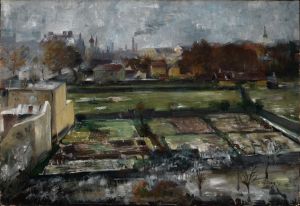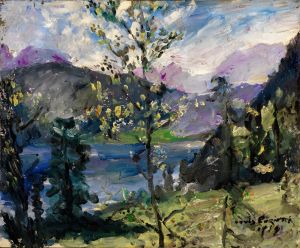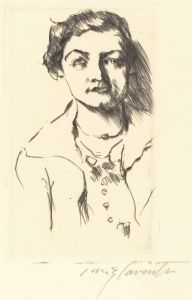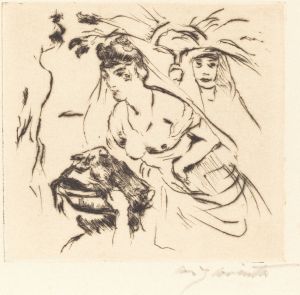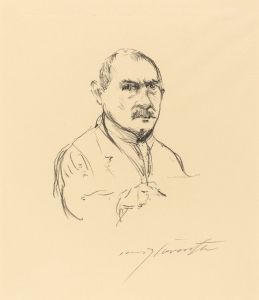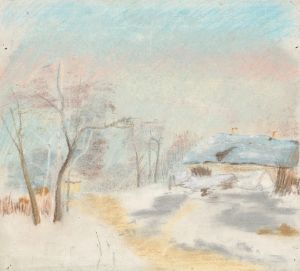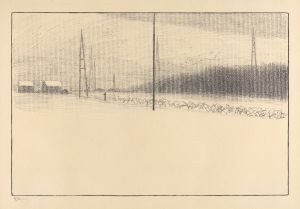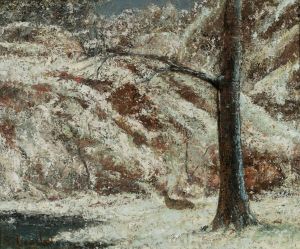
Der Herzogstand Am Walchensee Im Schnee
A hand-painted replica of Lovis Corinth’s masterpiece Der Herzogstand Am Walchensee Im Schnee, meticulously crafted by professional artists to capture the true essence of the original. Each piece is created with museum-quality canvas and rare mineral pigments, carefully painted by experienced artists with delicate brushstrokes and rich, layered colors to perfectly recreate the texture of the original artwork. Unlike machine-printed reproductions, this hand-painted version brings the painting to life, infused with the artist’s emotions and skill in every stroke. Whether for personal collection or home decoration, it instantly elevates the artistic atmosphere of any space.
Lovis Corinth's painting Der Herzogstand am Walchensee im Schnee (The Herzogstand at Walchensee in the Snow) is a notable work by the German painter, created during his later years. Corinth, a key figure in German Impressionism and Expressionism, is renowned for his landscapes, portraits, and still lifes. This particular painting depicts the Herzogstand, a mountain in the Bavarian Alps, located near Lake Walchensee, during a snowy winter scene.
The Walchensee region held significant personal and artistic importance for Corinth. He frequently visited the area with his family, especially after acquiring a house there in 1918. The serene and picturesque landscapes of Walchensee became a recurring subject in his works, and he painted numerous views of the lake and its surrounding mountains. These paintings are collectively referred to as the "Walchensee series" and are considered some of the finest examples of Corinth's landscape art.
Der Herzogstand am Walchensee im Schnee exemplifies Corinth's mature style, characterized by bold brushstrokes, vibrant colors, and a dynamic interplay of light and shadow. The painting captures the snow-covered Herzogstand mountain, with its rugged peaks and the tranquil lake below. Corinth's use of color and texture conveys the cold, crisp atmosphere of winter, while also imbuing the scene with a sense of vitality and movement. The painting reflects his ability to merge naturalistic detail with expressive, almost abstract elements, a hallmark of his later work.
This painting is part of Corinth's exploration of nature's beauty and power, themes that became increasingly prominent in his art following a stroke in 1911. Despite the physical challenges he faced after the stroke, Corinth's artistic output remained prolific, and his work took on a more introspective and emotional quality. The Walchensee series, including Der Herzogstand am Walchensee im Schnee, is often interpreted as a reflection of his deep connection to the natural world and his personal resilience.
Today, Lovis Corinth's Walchensee paintings are celebrated for their contribution to modern landscape painting. They are housed in various museums and private collections, with some works from the series displayed in institutions such as the Neue Pinakothek in Munich. However, specific details about the current location of Der Herzogstand am Walchensee im Schnee are not readily available. Corinth's legacy endures as one of Germany's most influential painters of the late 19th and early 20th centuries.








